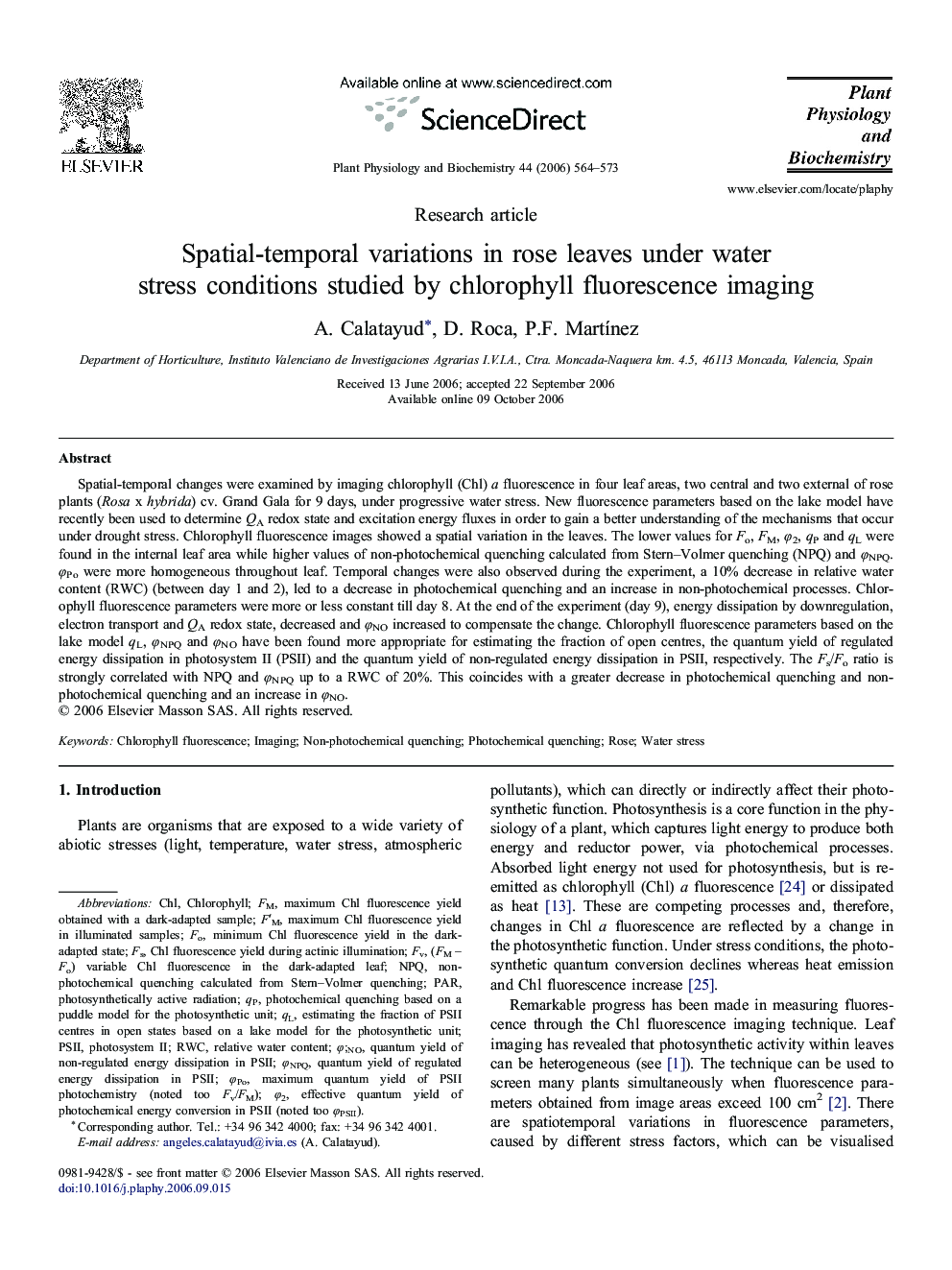| Article ID | Journal | Published Year | Pages | File Type |
|---|---|---|---|---|
| 2016724 | Plant Physiology and Biochemistry | 2006 | 10 Pages |
Abstract
Spatial-temporal changes were examined by imaging chlorophyll (Chl) a fluorescence in four leaf areas, two central and two external of rose plants (Rosa x hybrida) cv. Grand Gala for 9Â days, under progressive water stress. New fluorescence parameters based on the lake model have recently been used to determine QA redox state and excitation energy fluxes in order to gain a better understanding of the mechanisms that occur under drought stress. Chlorophyll fluorescence images showed a spatial variation in the leaves. The lower values for Fo, FM, Ï2, qP and qL were found in the internal leaf area while higher values of non-photochemical quenching calculated from Stern-Volmer quenching (NPQ) and ÏNPQ. ÏPo were more homogeneous throughout leaf. Temporal changes were also observed during the experiment, a 10% decrease in relative water content (RWC) (between day 1 and 2), led to a decrease in photochemical quenching and an increase in non-photochemical processes. Chlorophyll fluorescence parameters were more or less constant till day 8. At the end of the experiment (day 9), energy dissipation by downregulation, electron transport and QA redox state, decreased and ÏNO increased to compensate the change. Chlorophyll fluorescence parameters based on the lake model qL, ÏNPQ and ÏNO have been found more appropriate for estimating the fraction of open centres, the quantum yield of regulated energy dissipation in photosystem II (PSII) and the quantum yield of non-regulated energy dissipation in PSII, respectively. The Fs/Fo ratio is strongly correlated with NPQ and ÏNPQ up to a RWC of 20%. This coincides with a greater decrease in photochemical quenching and non-photochemical quenching and an increase in ÏNO.
Keywords
Related Topics
Life Sciences
Agricultural and Biological Sciences
Plant Science
Authors
A. Calatayud, D. Roca, P.F. MartÃnez,
